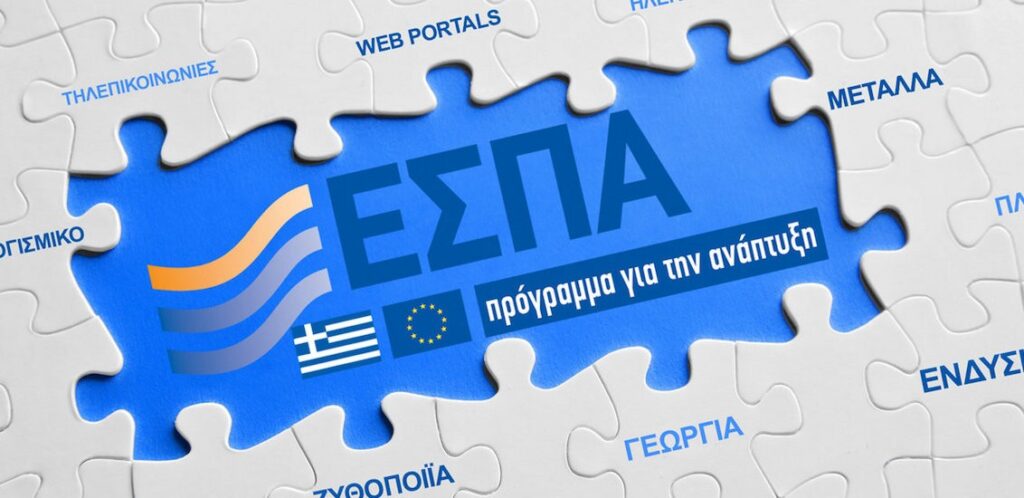
Investments in the sectors of Technology, renewable energy sources, networks, competitiveness of small and medium-sized enterprises, access to employment for the unemployed, especially young people, and economically inactive people; etc. focuses the new NSRF for the period 2021-2027, as stated in a relevant circular of the Ministry of Economy and Development posted.
1st Circular for the design of the new NSRF 2021-2027
The funds available in Greece are 19,2 billion euros from 17,8 billion euros (2018 prices) which was in the period 2014-2020. Also for the first time, the European Commission's proposal includes, together with the proposal of the overall EU budget, both the allocation of resources per Member State and a distinct methodology for allocating the resources of the European Social Fund (ESF) to the Member States.
What does the EU framework under negotiation provide for?
In the new programming period, emphasis is placed on five policy objectives:
- A smarter Europe - innovative and smart economic transformation.
- A greener, low-carbon Europe.
- A more connected Europe - mobility and regional ICT interconnections.
- A more social Europe - delivering on the European Pillar of Social Rights.
- A Europe closer to its citizens - sustainable and integrated development of urban, rural and coastal areas thanks to local initiatives.
Cohesion policy continues to invest in all Regions. The categories of Regions that are formed are:
- Less developed (GDP per head 75% of the European average),
- Regions in transition (GDP per capita between 75% and 100%) and
- More developed (GDP per capita 100%).
Η πρόταση της Ε.Ε. σχετικά με την πολιτική Συνοχής περιλαμβάνει ενιαίο Κανονισμό Κοινών Διατάξεων (ΚΔΔ) που διέπει την εφαρμογή των ακολούθων Ταμείων: Ευρωπαϊκό Ταμείο Περιφερειακής Ανάπτυξης (ΕΤΠΑ), Ταμείο Συνοχής (ΤΣ), Ευρωπαϊκό Κοινωνικό Ταμείο (ΕΚΤ), Ευρωπαϊκό Ταμείο Θάλασσας και Αλιείας (ΕΤΘΑλ) και για πρώτη φορά το Ταμείο Ασύλου Μετανάστευσης και Ένταξης, το Ταμείο Εσωτερικής Ασφάλειας και το Ταμείο Διαχείρισης Συνόρων και Θεωρήσεων.
NSRF 2021-2027 - How the money will be distributed to the Greek regions
Based on the categorization in Greece, the Regions of Attica and South Aegean are included in the Regions in transition. The remaining 11 are classified as Less Developed Regions.
Accordingly, the co-financing rates according to the category of regions (excluding Interreg programmes) are modulated according to the Commission's proposal to a maximum of:
- 70% for less developed
- 55% for regions in transition
- 40% for more developed
- Especially for the Social Innovation axes of the ESF+ the co-financing rate is 95%
- The co-financing rate for the Cohesion Fund at the level of each priority shall not be higher than 70%
- The co-financing rate for Interreg programmes shall not be higher than 70%
- Technical assistance measures implemented at the initiative of or on behalf of the Commission may be financed at the rate of 100%
The direct link between Cohesion Policy and the European Semester and structural reforms is a key Commission proposal under the EU budget. This link with the European Semester will be made through the Country Specific Recommendations.
Thematic concentration remains an obligation in both the ERDF and the ESF, but with changes related to the current period. In the ERDF, it concerns Policy Objectives 1 and 2, a smarter and greener Europe. For Member States with a GDP per capita below 75%, such as Greece, it is projected that:
- at least 35% of ERDF resources are allocated to Policy Objective 1, and
- at least 30% of ERDF resources to be allocated to Policy Objective 2
In addition, 6% of the ERDF resources will be allocated to sustainable urban development. In the ESF respectively, the budget allocated to shared management should be allocated:
- at least 25% to promote social inclusion (disadvantaged groups, the economically inactive and the long-term unemployed, etc.),
- at least 4% to combat material deprivation, with a view to promoting FEAD priorities/activities (support for the most deprived).
- at least 10% to support youth employment in Member States with a youth share not in employment, education and training (NEETs), such as in Greece
For the overall budget of the European Commission, it also commits that 25% of the resources will be allocated to climate change actions.
And the necessary conditions
Στην πρόταση των Κανονισμών της Ευρωπαϊκής Επιτροπής τίθενται συγκεκριμένες προϋποθέσεις για τη συγχρηματοδότηση των έργων υπό τον όρο "αναγκαίοι όροι” (enabling conditions). Οι αναγκαίοι όροι της νέας προγραμματικής περιόδου για το NSRF 2021-2027 αφορούν κατ΄ ουσία το απαραίτητο πλαίσιο (θεσμικό ή στρατηγικό) σύμφωνα με το οποίο θα υλοποιούνται οι αντίστοιχες δράσεις.
The crucial difference of the necessary conditions in relation to the conditionalities of the programming period 2014 - 2020 is that they must have been fulfilled with the approval of each Program. In order for EU funding to be carried out smoothly, i.e. for the payment of projects per sector, all the requirements of the criteria must first have been met per necessary serum and specific objective to which it corresponds.
It is important to bear in mind that the fulfilment of the necessary conditions must be ensured throughout the programming period. It will, according to the Commission's proposal for a regulation, be monitored by the European Commission.




